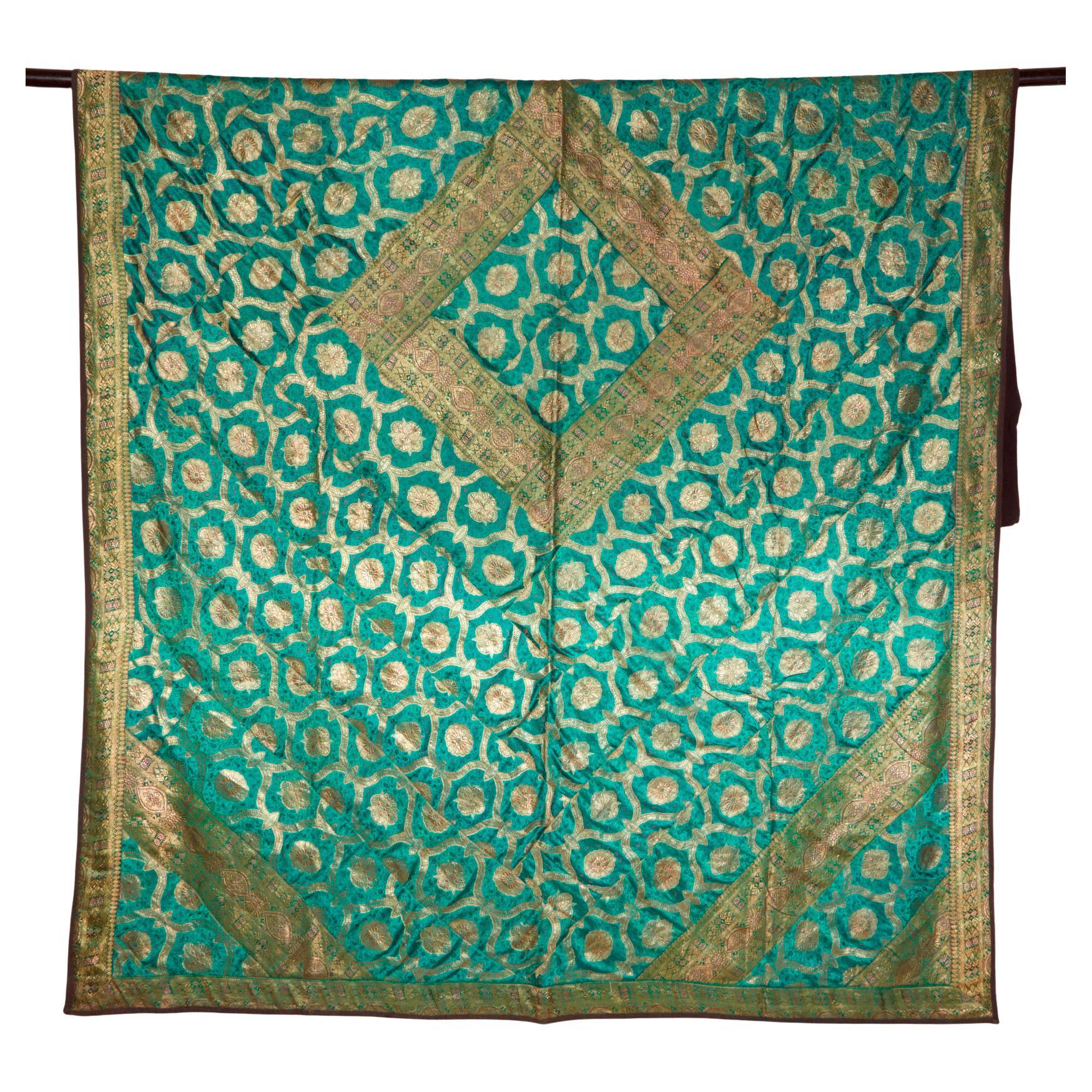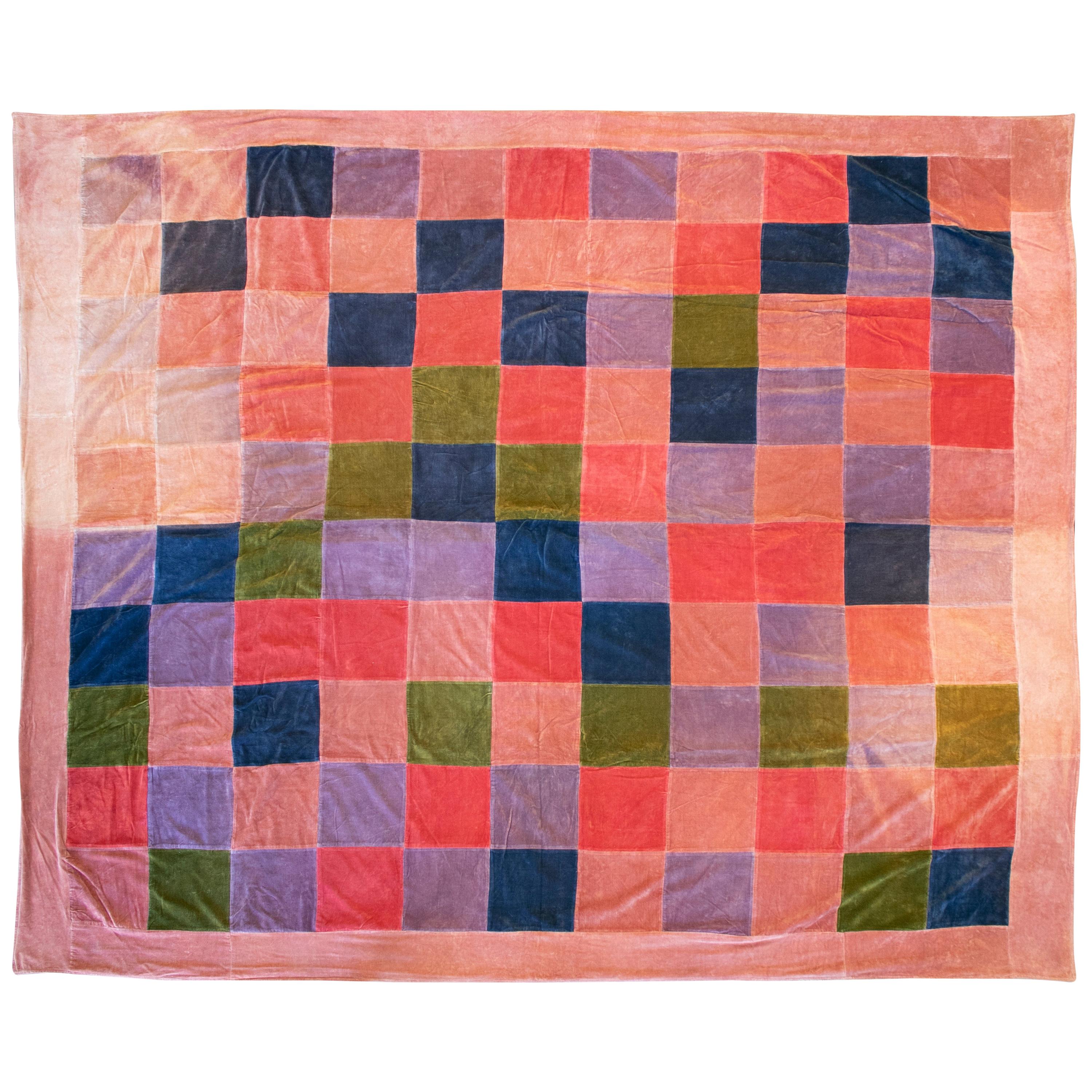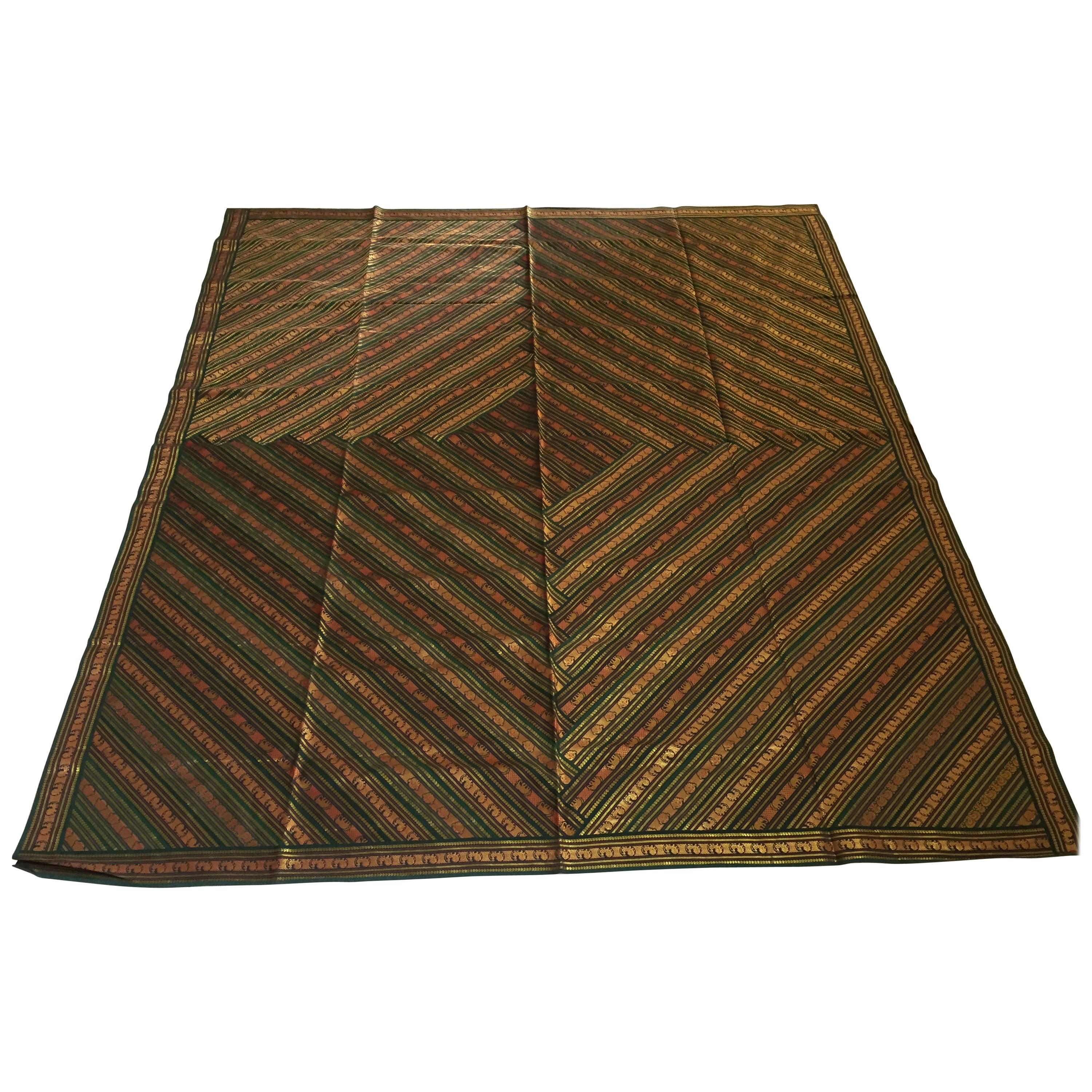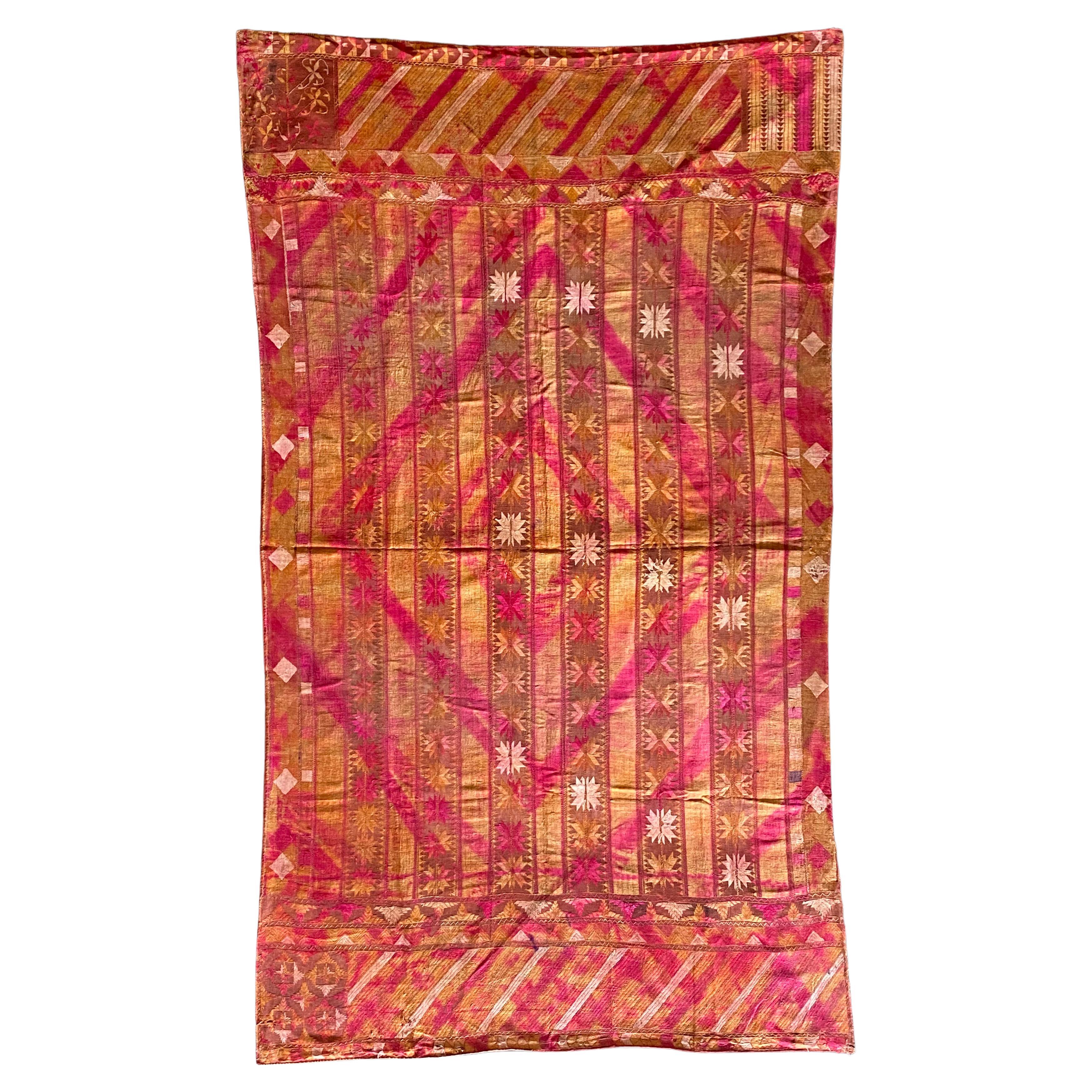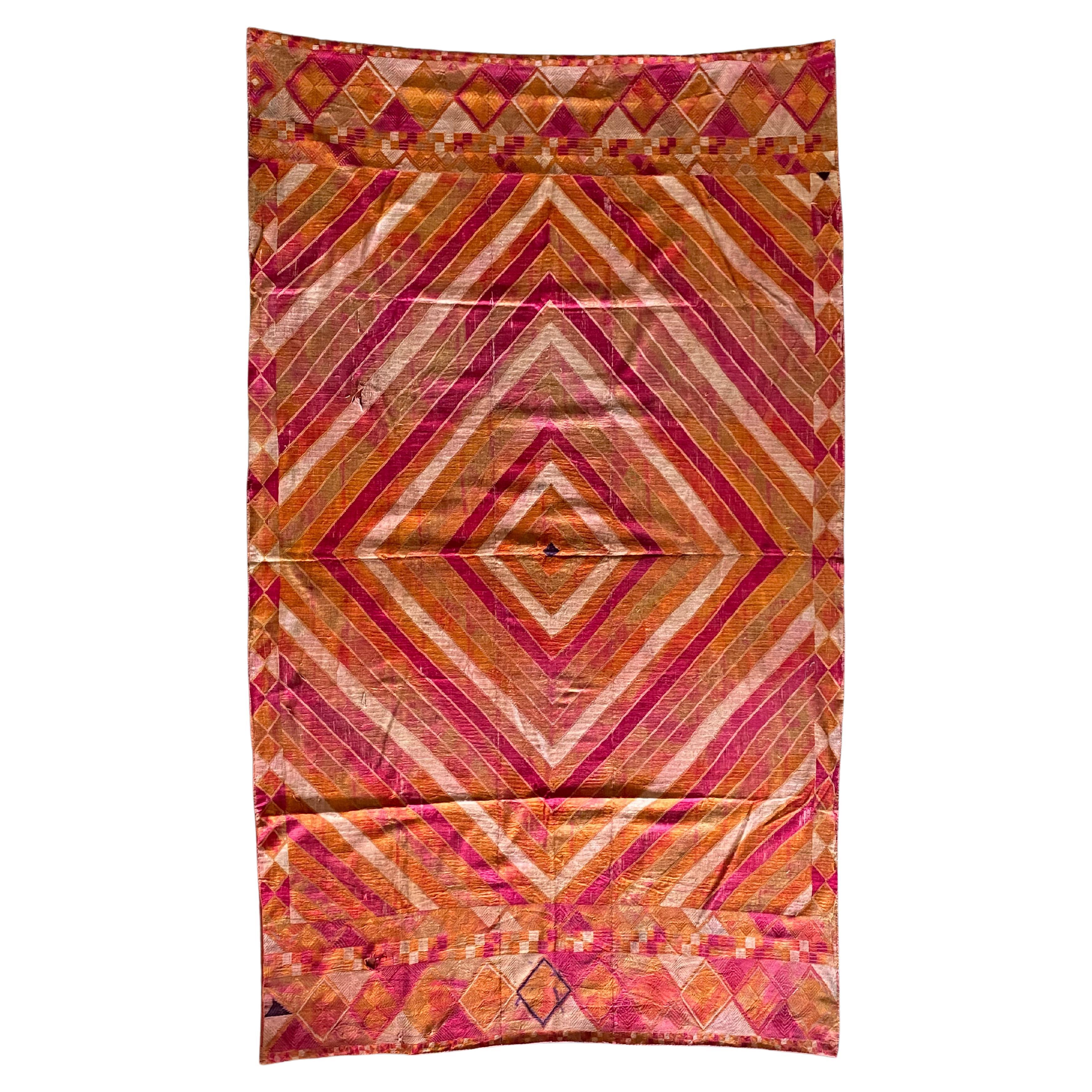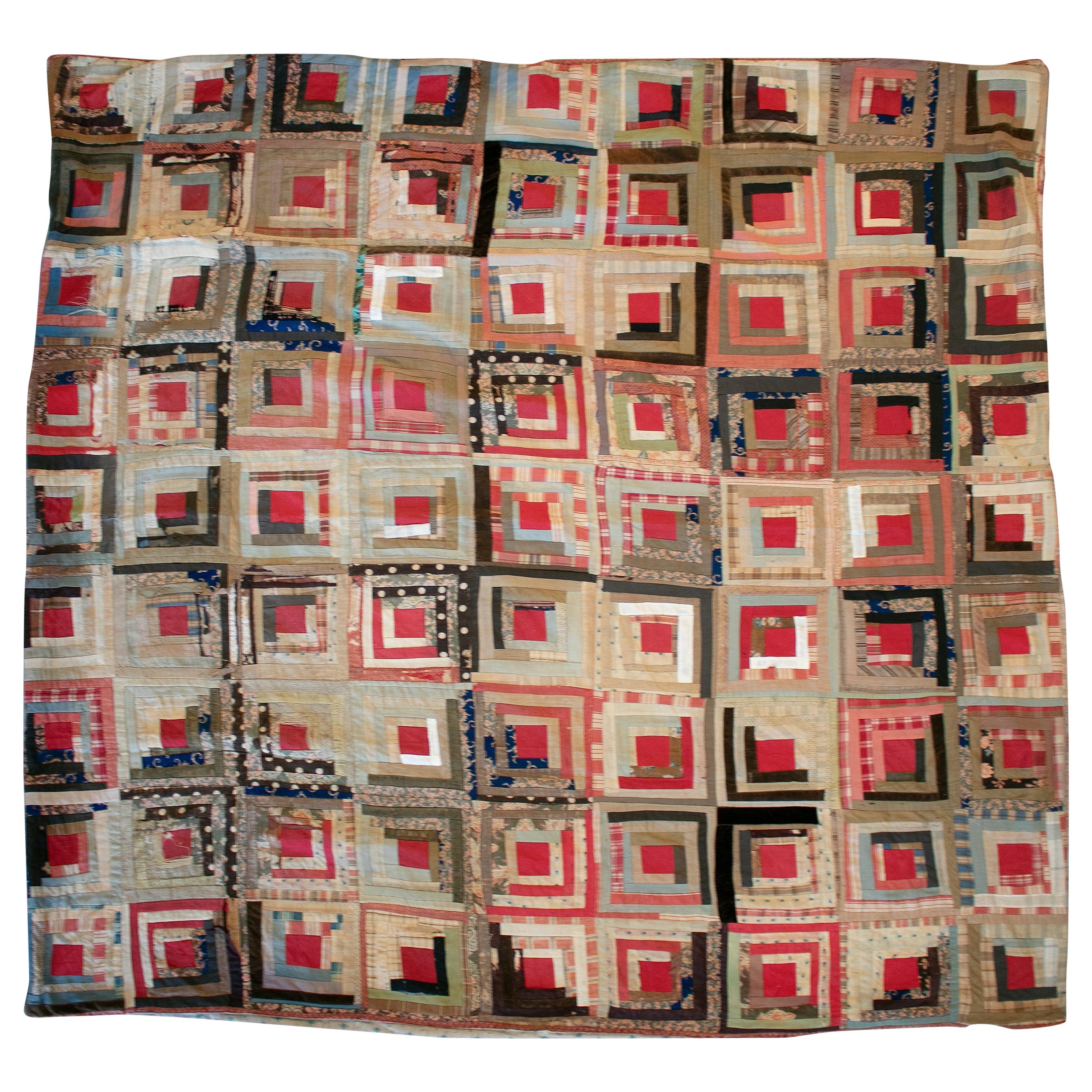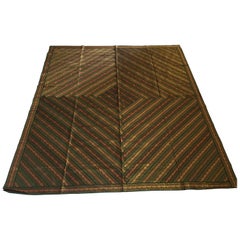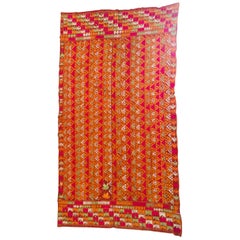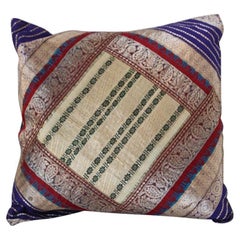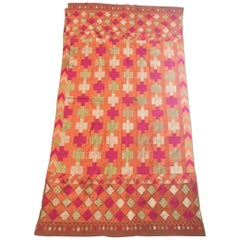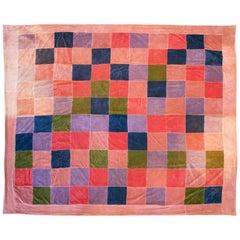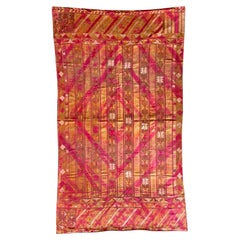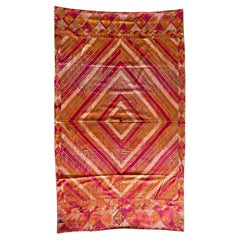Items Similar to 1950s Vintage Silk Sari Textile Quilt Patchwork, India
Want more images or videos?
Request additional images or videos from the seller
1 of 11
1950s Vintage Silk Sari Textile Quilt Patchwork, India
$2,450
£1,818
€2,117.72
CA$3,410.42
A$3,797.81
CHF 1,976.55
MX$46,826.51
NOK 25,172.86
SEK 23,660.05
DKK 15,800.78
Shipping
Retrieving quote...The 1stDibs Promise:
Authenticity Guarantee,
Money-Back Guarantee,
24-Hour Cancellation
About the Item
1950s vintage silk sari tapestry quilt patchwork.
1950s Vintage Silk Sari Textile Quilt Patchwork made in India.
Handcrafted quilt patchwork made from antique and vintage saris borders.
Stripes silk pieces made in multicolor bright colors with gold lame striped squares.
Indian Silk saris lame textile lined with yellow orange fabric,
Could be used as a bed cover or hanging tapestry on the wall or on the floor.
Please see last 2 pictures for condition.
Size: 93" x 82".
Made in India, circa 1950s.
Great for a Moroccan Moorish Bohemian style bedroom, as a bedspread or wall hanging.
- Dimensions:Height: 93 in (236.22 cm)Width: 82 in (208.28 cm)Depth: 0.2 in (5.08 mm)
- Style:Moorish (In the Style Of)
- Materials and Techniques:
- Place of Origin:
- Period:
- Date of Manufacture:1950
- Condition:Wear consistent with age and use. Please see last 2 pictures for condition.
- Seller Location:North Hollywood, CA
- Reference Number:Seller: 613181stDibs: LU90687728633
About the Seller
5.0
Platinum Seller
Premium sellers with a 4.7+ rating and 24-hour response times
1stDibs seller since 2011
3,038 sales on 1stDibs
Typical response time: 1 hour
- ShippingRetrieving quote...Shipping from: North Hollywood, CA
- Return Policy
Authenticity Guarantee
In the unlikely event there’s an issue with an item’s authenticity, contact us within 1 year for a full refund. DetailsMoney-Back Guarantee
If your item is not as described, is damaged in transit, or does not arrive, contact us within 7 days for a full refund. Details24-Hour Cancellation
You have a 24-hour grace period in which to reconsider your purchase, with no questions asked.Vetted Professional Sellers
Our world-class sellers must adhere to strict standards for service and quality, maintaining the integrity of our listings.Price-Match Guarantee
If you find that a seller listed the same item for a lower price elsewhere, we’ll match it.Trusted Global Delivery
Our best-in-class carrier network provides specialized shipping options worldwide, including custom delivery.More From This Seller
View AllGreen Bed Cover Patchwork from India
Located in North Hollywood, CA
Green bed cover patchwork made in India.
Featuring stylized peacocks and elephants in gold lame threads.
backed up with black linen.
Great to use as a bed...
Category
20th Century Indian Raj Quilts and Blankets
Phulkari Bawan Bagh Wedding Shawl, Silk Embroidery on Cotton, Punjab India
By Rajhastani
Located in North Hollywood, CA
A rare pattern embroidered in silk on a hand loomed cotton background.
Punjab is known for its Phulkaris. The embroidery is done with floss silk thread on coarse handwoven cotton fab...
Category
Early 20th Century Indian Folk Art Textiles
Materials
Cotton, Silk
Decorative Throw Silk Pillow Made from Vintage Sari Borders, India
Located in North Hollywood, CA
Decorative accent throw silk pillow made from vintage silk sari borders.One of a kind, blue, green, gold, green, purple, metallic threads.Handcrafted in India.We do have multiple in ...
Category
20th Century Indian Moorish Pillows and Throws
Materials
Fabric
Antique Phulkari Bawan Bagh Wedding Shawl, Silk Embroidery Punjab India
By Rajhastani
Located in North Hollywood, CA
A rare pattern embroidered in silk on a hand loomed cotton background.
Punjab is known for its Phulkaris. The embroidery is done with floss silk thread on coarse handwoven cotton fabric. Geometrical patterns are usually embroidered on the Phulkaris.
Phulkaris and Baghs were worn by women all-over Punjab during marriage festivals and other joyous occasions. They were embroidered by the women for their own use and use of other family members and were not for sale in the market.
The most favoured color is red and its shades, because Bagh and Phulkari are used during marriage and other festivals. Red is also considered auspicious by Punjabi Hindus and Sikhs.
Phulkari (Punjabi) embroidery technique from the Punjab region of the Indian subcontinent, literally means flower work, which was at one time used as the word for embroidery, but in time the word “Phulkari” became restricted to embroidered shawls and head scarfs. Simple and sparsely embroidered odini (head scarfs), dupatta and shawls, made for everyday use, are called Phulkaris, whereas garments that cover the entire body, made for special and ceremonial occasions like weddings and birth of a son, fully covered fabric is called Baghs ("garden") and scattered work on the fabric is called "adha bagh" (half garden). This whole work is done with white or yellow silk floss on cotton khaddarh and starts from the center on the fabric called "chashm-e-bulbul" and spreads to the whole fabric.
All of our textiles are handmade and original designs, the making of which takes a lifetime to learn through communities of artisans passing knowledge and techniques from one generation to another.
Bawan Bagh Phulkari textile - Wedding Shawl...
Category
Early 20th Century Indian Anglo Raj Textiles
Materials
Cotton, Silk
African Batik Cloth Natural Hand-woven Hand-Printed Cotton Fabric Ghana 10 Yards
Located in North Hollywood, CA
African Batik Cloth Natural Hand-woven Hand-Printed Cotton Fabric Ghana 10 yards.
Colors are organic earth tone beige and light brown in geometric design.
Non waxed fabric circa 1950s.
Hand made in Ghana Africa.
Museum Quality Original Long Piece.
380 inches, (30 ft 10 yards Long) x 46 inches Inches Wide( 4ft).
Could be use to make pillows or upholstery.
History of Batik in Africa:
Batik, a traditional fabric art technique, has a rich history in Ghana, West Africa. The practice of batik involves using wax to create intricate patterns on fabric, which is then dyed to achieve the desired design. While batik has its origins in Asia, particularly in Indonesia, it has been embraced and adapted by various African countries, including Ghana.
In Ghana, batik-making can be traced back to the mid-20th century when it gained popularity as a form of traditional textile art. The craft was introduced by artists and artisans who were inspired by the vibrant and expressive nature of batik. These early practitioners experimented with different designs, colors, and patterns, infusing local themes and motifs into their creations.
Over time, batik became an important part of Ghanaian culture and identity. It is not only used for clothing but also for various decorative and functional items such as wall hangings, tablecloths, and accessories. The art form often reflects the rich cultural heritage of Ghana, incorporating symbols, proverbs, and traditional stories into the designs.
Ghanaian batik artists often employ a combination of traditional and contemporary elements, creating a unique fusion of styles. The process of making batik involves applying hot wax to the fabric using various tools to create the desired patterns. The wax acts as a resist, preventing dye from penetrating the waxed areas. After dyeing, the wax is removed, revealing the intricate designs on the fabric.
Today, batik-making in Ghana continues to thrive as both a traditional craft and a form of artistic expression. Many artisans and designers draw inspiration from Ghana's diverse cultural landscape, incorporating elements from different regions and ethnic groups into their batik creations. The art form has also gained international recognition, with Ghanaian batik products being sought after both locally and abroad.
In summary, the history of batik in Ghana is a testament to the creativity and adaptability of artists who have embraced and transformed this traditional technique into a vibrant and culturally significant art form within the country.
HISTORY OF BATIK
In the mid-nineteenth century, the Belanda Hitam, or "Black Dutchmen," are said to have introduced batik to West Africa after serving as indentured soldiers for the Dutch in Indonesia. Returning from their conscriptions with trunks of fine Javanese batik, the opulent patterns captured the imagination of their friends and relatives. However, textile history is complex, and only a handful of recruits returned to West Africa with batik due to delayed payments.
Batik, with roots traced to Egyptian mummies, is a tradition found globally, from Southeast Asia to Japan and India. Europeans, particularly the Dutch, played a significant role in industrializing batik from the seventeenth century onward.
In West Africa, Dutch Scholar Ineke van Kessel suggests that batik arrived from India over trans-Saharan routes. Local populations, like the Yoruba in Nigeria, incorporated wax printing into their textiles. European traders brought wax and non-wax fabrics to West Africa in the seventeenth century, targeting a population ready for their consumption. European designers adapted prints for the African market...
Category
Mid-20th Century Ghanaian Folk Art Textiles
Materials
Cotton
Vintage Banjara Ethnic Embroidered Chaakla with Mirrors, Wall Hanging, India
Located in North Hollywood, CA
A beautiful vintage Indian textile from Gujarat.
India – Gujarat floss silk embroidery Chalka folk art textile, vintage wall hanging.
Antique Banjara Embroidered Chaakla textile with Mirrors, Wall Hanging, India.
Banjara tribal Chaakla textile wall decor, India.
This handwoven base cloth is embellished with mirrors and hand embroidery work.
Antique Textile Folk art. Great piece of textile for framing or hanging on the wall.
This piece was made for personal use, and was well used.
Embroidered ceremonial cloth, square hanging folk art...
Category
Early 20th Century Indian Folk Art Textiles
Materials
Linen, Silk
You May Also Like
Brocade Silk Kantha Quilt, Bangladesh Late 20th Century
Located in New York, NY
Bangladeshi quilts, known as Kantha, consist of two to three pieces of cloth sewn together with decorative embroidery stitches. They are made out of Saris and are mainly used for bed...
Category
Vintage 1980s Bangladeshi Agra Quilts and Blankets
Materials
Canvas, Silk
$375 Sale Price
37% Off
1980s Indian Hand Sewn Patchwork Tapestry
Located in Marbella, ES
1980s Indian hand sewn patchwork tapestry.
Category
Late 20th Century Indian Tapestries
Materials
Fabric
Indian Phulkari Wedding Textile, Silk & Cotton Embroidery, Punjab 1900s
Located in Jimbaran, Bali
This strikingly coloured Phulkari is from Punjab, India. It was hand-crafted from silk and cotton, with silk being used for the embroidery. Phulkari’s are a form of wedding shawl and...
Category
Early 20th Century Indian Other Textiles
Materials
Cotton, Silk
Indian Phulkari Wedding Textile, Silk & Cotton Embroidery, Punjab 1900s
Located in Jimbaran, Bali
This strikingly coloured Phulkari is from Punjab, India. It was hand-crafted from silk and cotton, with silk being used for the embroidery. Phulkari’s are a form of wedding shawl and...
Category
Early 20th Century Indian Other Textiles
Materials
Cotton, Silk
1930s Indian Hand Sewn Patchwork Tapestry
Located in Marbella, ES
1930s Indian hand sewn patchwork tapestry.
Category
Early 20th Century Indian Decorative Art
Materials
Velvet
Brocade Silk Bangladeshi Kantha Throw, Late 20th Century
Located in New York, NY
Bangladeshi quilts, known as Kantha, consist of two to three pieces of cloth sewn together with decorative embroidery stitches. They are mostly made out of Saris and are mainly used ...
Category
Vintage 1980s Bangladeshi Agra Quilts and Blankets
Materials
Canvas, Silk
$412 Sale Price
44% Off
